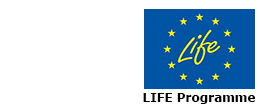C.1 – Monitoring of the environmental impact of life-MED project
Aim of the action C.1:
- the monitoring of the environmental impact of the project with specific indicators detected during the course of the operational phases.
The indicators identified are the following::
– Tons of waste collected by CAUTO and Ateliere Fara Frontiere in the medical institutions and properly managed.
– Number of devices and equipment donated by healthcare centres and reconditioned for the subsequent reuse.
– Number of spare parts removed from the electronic equipment and intended for reuse
– Number of devices and equipment donated by MEMUA and AFF to entities or organisations that operate in the international cooperation for their reuse.
– Tons of CO2 into the atmosphere saved.
In addition, the impact generated by the beneficiaries during the implementation actions is detected. Particular attention is paid to the impact associated with the trips.
The distances travelled by all the participants are monitored through the following indicators:
– km by the car done
– km travelled by truck on road
– tons of Co2 emitted into the atmosphere
The collection of indicators is regularly done, every year by the responsible organisation for the action. At the end of each project phase, an interim report containing the results of the monitoring is edited.
At project conclusion, a final report containing the overall environmental impact of MED will be edited.
The value of tons of CO2 into the atmosphere being saved is showed in the home page of the project website and constantly updated.
Expected results:
– publication of n.3 interim reports with the results of the monitoring
– publication of the final report on the environmental impact of the project
– environmental impact assessment of the project
C.2 – Assessment of the socio-economic impact of the MED project
Aim of action C2:
– to assess the socio-economic impact of the project.
– about the social impact, to increase in employment thanks to new recruitment by the beneficiaries during the course of the project.
– A further increase in employment that will take place once the new integrated discarded medical equipment management system will be fully operational, after the conclusion of the project.
– Access to more advanced medical institutions by citizens of all European countries.
The economic impact is linked both to the donation of the equipment and the subsequent set up of the new integrated management system, which makes greater volumes of medical equipment available for a lager number of beneficiaries.
This system, once fully operational, sees an increase in the number of potentially significant economic players in the sector.
The proposed MED procedures allow to avoid waste or to reduce costs during the phase of inventory and assignment for the discard.
The path for donation allows the medical institutions to reduce investments concerning disposals. The donation to NGOs in Eastern European countries allows a huge saving on the purchase of this specific equipment.
The evaluation of these impacts will be realised before the end of the project. References will be made as far as possible to quantitative information.
During the development of the project, questionnaires are prepared and collected from public and private medical institutions, companies or consortia for the collection of WEEE or other waste fractions for the assessment of the socio-economic benefits generated.
Life-MED project will also perform an estimate of the overall economic size, at European level, of the new integrated management system once in regular activity.
A report with the results of this study will be published at the end of the project.
Expected results:
– collection of 25 questionnaires.
– publication of the final report.
– assessment of the socio-economic impact of the project.

 Română
Română Italiano
Italiano
